- Home
- slideshows
- miscellaneous
- We went inside one of the sprawling factories where Zara makes its clothes. Here's how the world's biggest fashion retailer gets it done.
We went inside one of the sprawling factories where Zara makes its clothes. Here's how the world's biggest fashion retailer gets it done.
The story begins in the heart of Zara's headquarters, where its 300-person design team is leafing through trend-forecasting books and putting together mood boards for the store's next collection.

Once a design is created, it is taken to a team of pattern cutters just meters away, who put together the first prototypes.
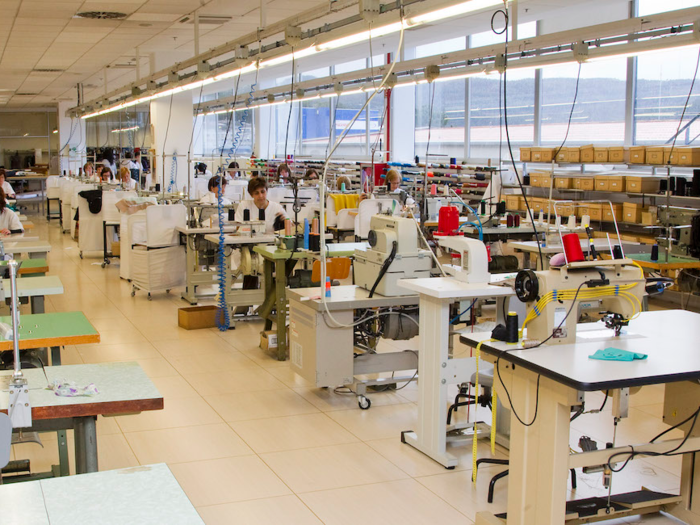
Once the prototype has been created, it is tested on models who are also full-time Inditex employees working in other areas of the fashion department.
These are almost 10 models there to test the various collections of men's and women's clothing, a spokesperson for Inditex told Business Insider.
Once the prototype has been signed off on, a digitalized pattern is sent to one of its factories.

Its sprawling, 860,000-square-foot campus is home to 10 different factories, which manufacture Zara's most fashion-forward items of clothing — basically, the products that need more attention, a spokesperson said. These factories are connected to the distribution center through a network of secret underground tunnels that transport clothing on electric hanging rails.
Other items are sent to external factories around the world.
However, all the manufactured items will return to one of its distribution centers to be sent out to stores.
The factory that we visited solely manufacturers clothing for Zara's womenswear collection. The first step of the process is to set the patterns to the fabric.
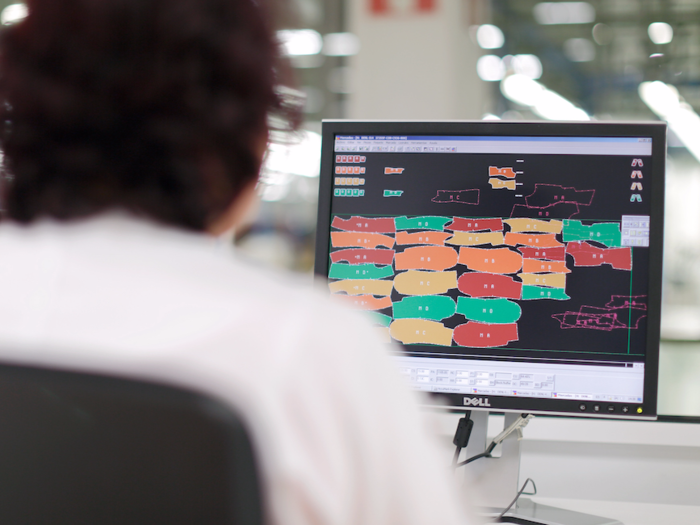
An Inditex spokesperson compared this process to a game of Tetris. The game here is to fit as many pieces as possible into one piece of material, in order to be most economical with the fabric.
The pattern layout is then sent to a machine that prints a life-size copy, using the relevant information about what part of the garment each piece is.
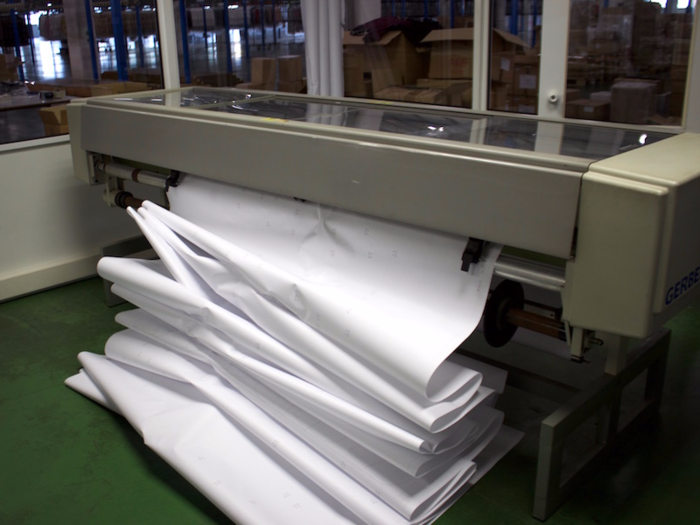
The fabric is laid out under large cutting machines, and the paper is placed on top.
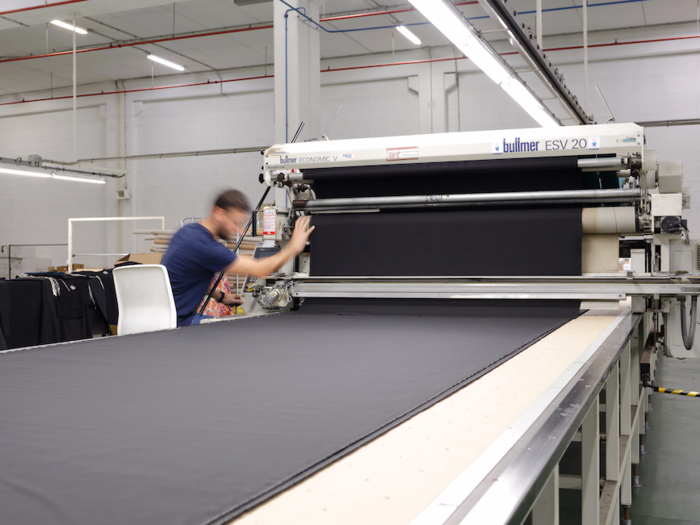
Both materials are held in place with a tight plastic sheet. The machine slices through the material, cutting out the individual pieces of fabric.
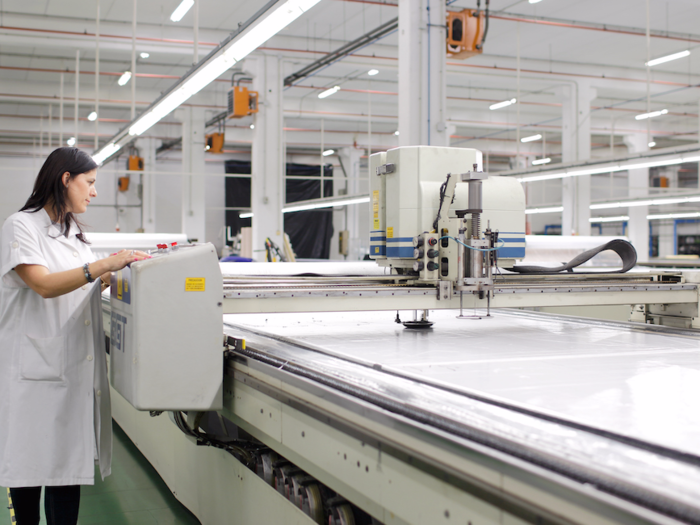
On thinner fabrics, 200 layers can be cut at one time.
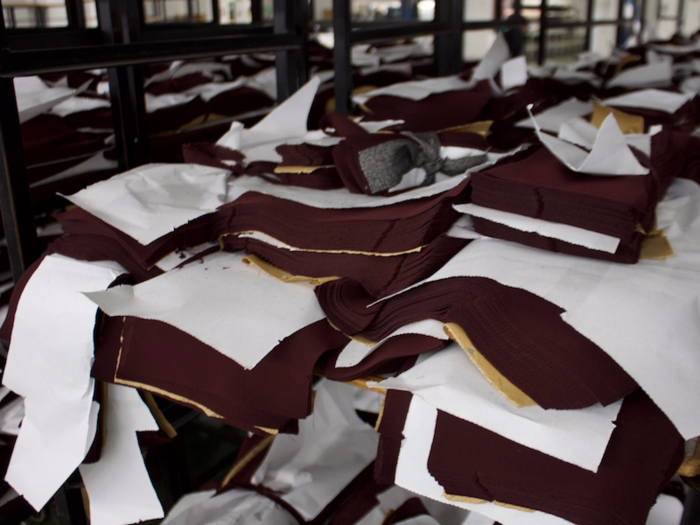
Once they have been cut, the paper and fabric pieces are boxed up together. The paper has all the details for the factory workers to see where these pieces need to be sent next, and which part of the garment they will make up.
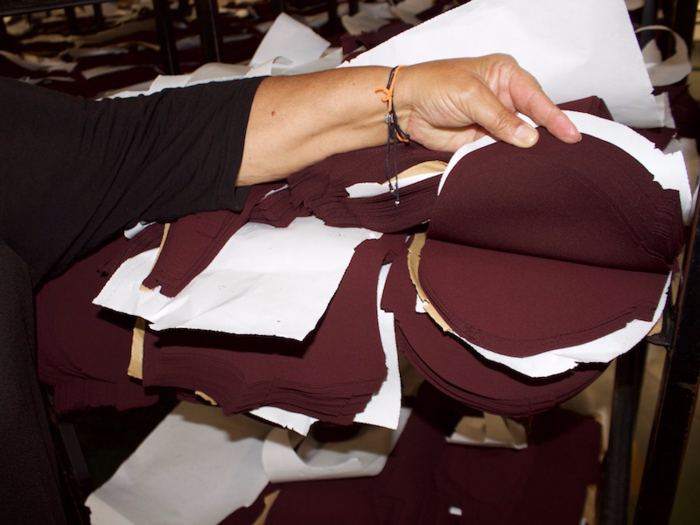
These pieces are sent to external factories to be sewn together, along with a prototype of the item so that the factories can copy the exact design.

A spokesperson for Inditex said that Zara outsources all of the stitching of its clothing.
Once the item is sewn together, it returns to Zara's headquarters.
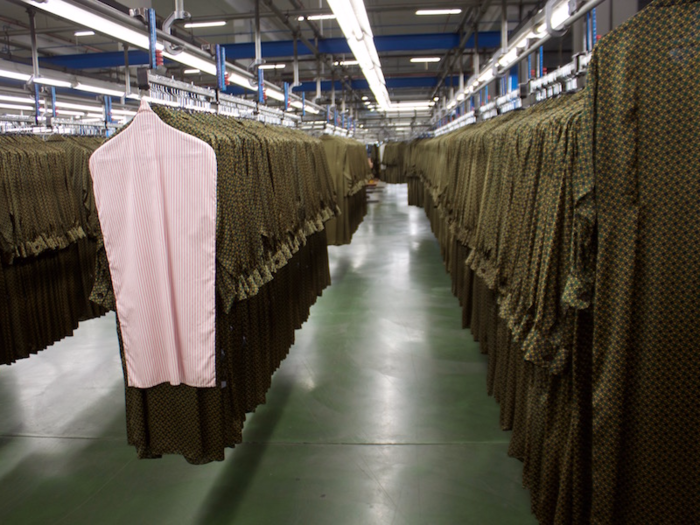
Zara's more expensive items and its key products are sent back to the factory for individual quality checks.

Pressing machines are used to flatten out the material.
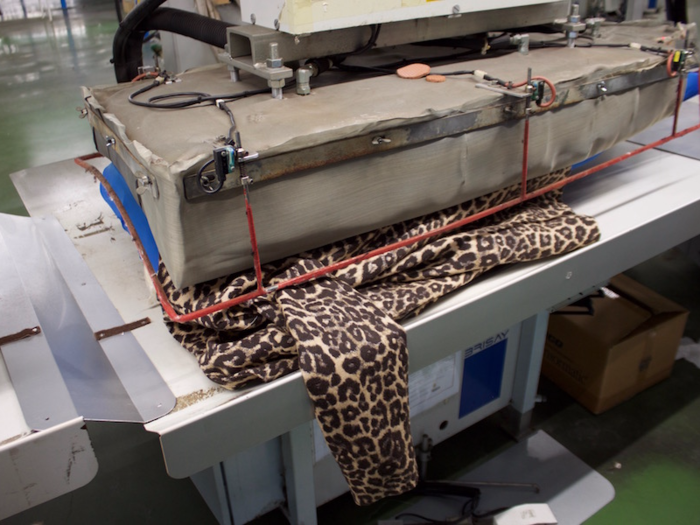
Sleeves are blasted with hot air to shape the fabric and stretch the stitching.
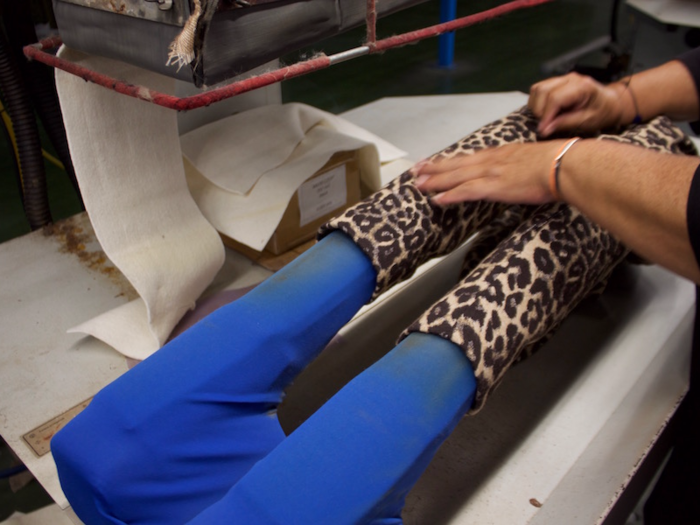
Each item is individually ironed.
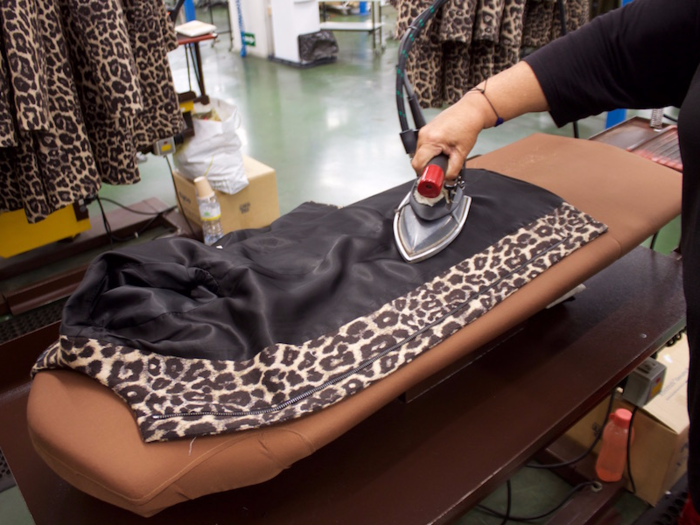
The clothing is then checked piece by piece ...
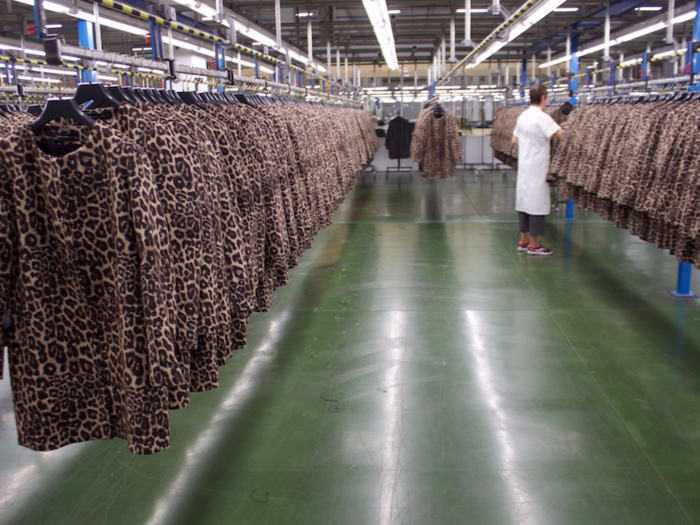
... to ensure there are no faulty stitches. Items that pass the checks are given a security tag.
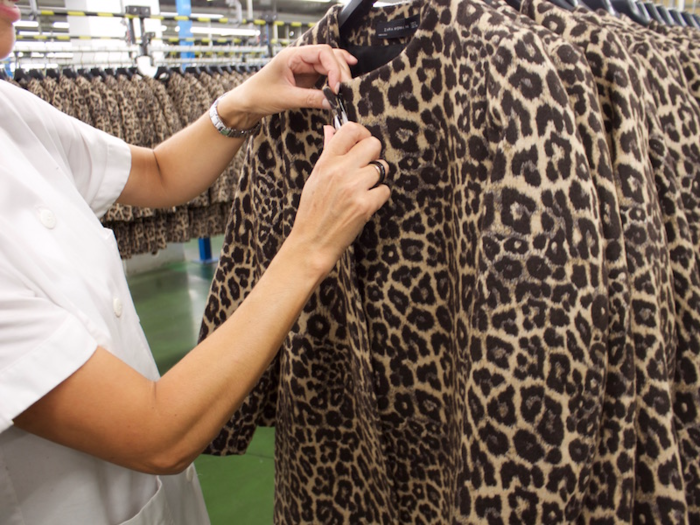
If any issues are spotted in this process, the clothing is put to one side ...
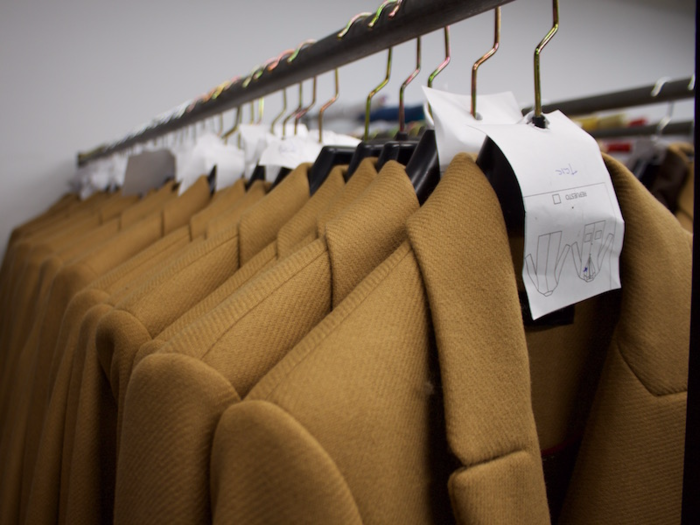
... and any small faults are fixed on sewing machines.
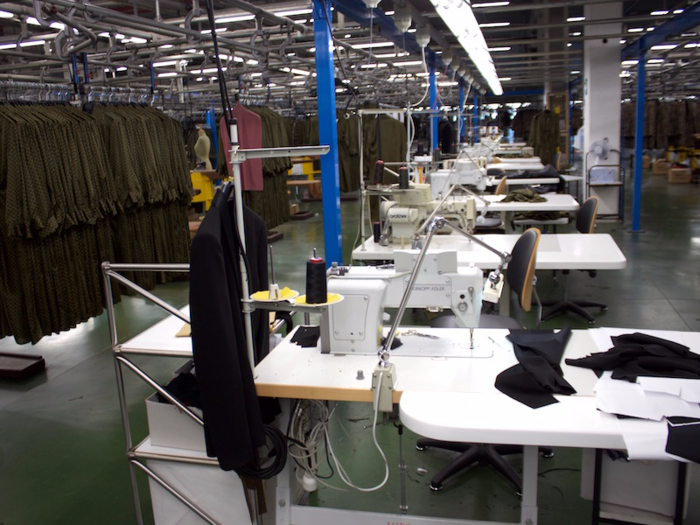
Next, we headed to the distribution center. It is the largest of four in Spain and ships products to Zara's 2,238 stores.
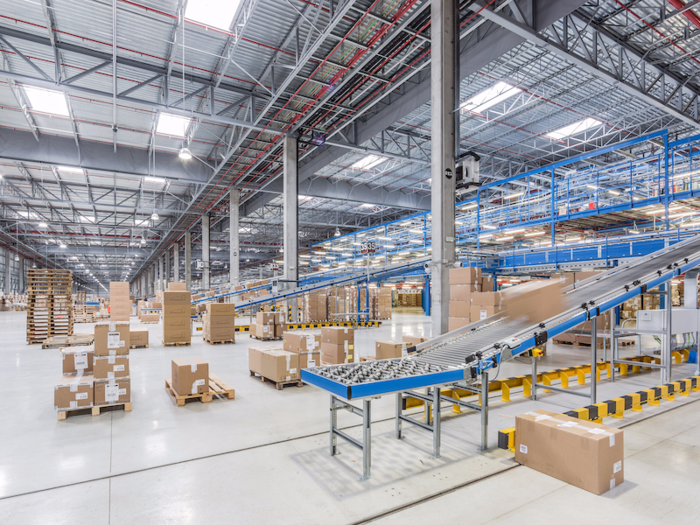
Any items that have been created in external factories and are not considered to be "fashion-forward" but more straightforward designs, are sent directly to the distribution center.
Zara relies on the external factories to do quality-control checks on these items, though spot checks are also done.
"We can't check one-for-one because there are millions; it's impossible," the spokesperson said.
Boxes with newly sewn-together clothing are unpacked from trucks and immediately passed through a sensor machine.
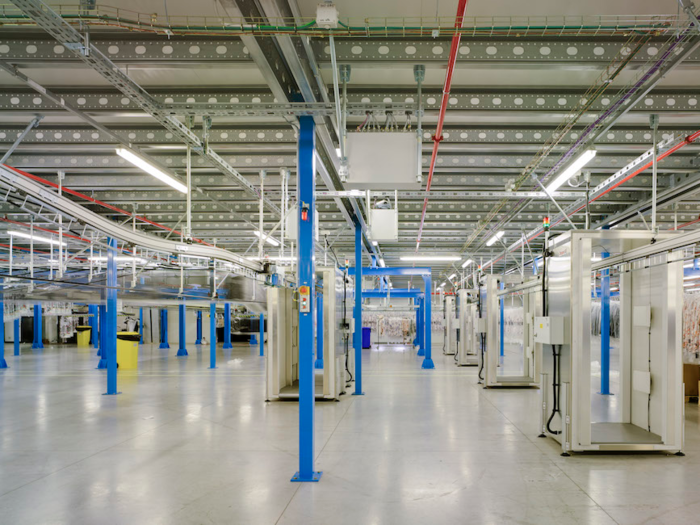
This machine is a crucial part of the operation. It is responsible for giving each item its Radio-Frequency Identification (RFID) tag. The machine will pick up how many items there are in the box and assign each one an electronic identity, which is stored in the security tag. This is used to track the item from the moment it arrives in the distribution center until the moment it is purchased by a customer in a Zara store.
RFID is one of Inditex's most recent innovations. It enables Zara to have an accurate and sleek way to track inventory levels.
All of Zara's products now have an RFID tag. This technology is expected to be rolled out to all of its remaining brands by 2020.
The boxes are placed on a conveyor belt and stocked in groups. These can be stored for several days in the distribution center before being shipped out.
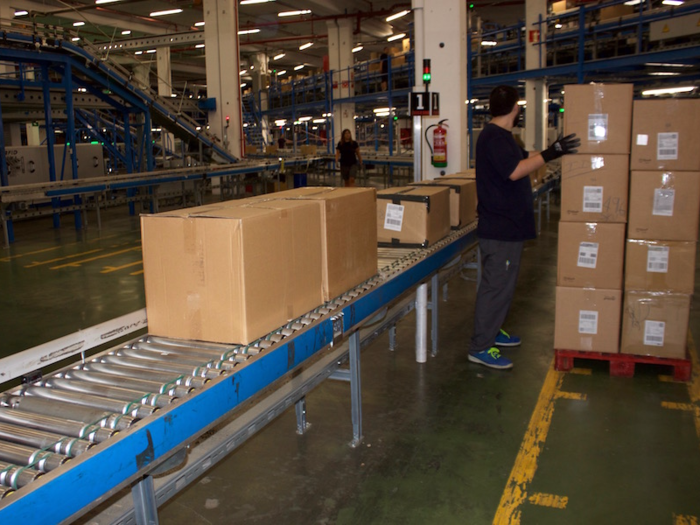
Items that are ready for shipment are removed from the boxes and distributed between the specific stores.
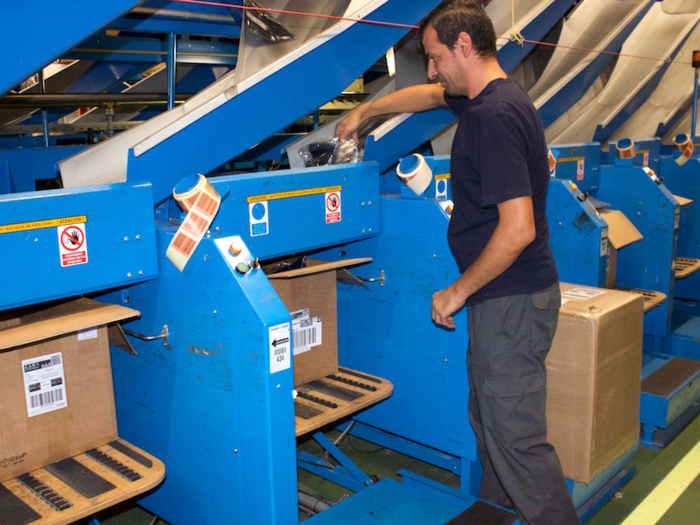
Information on the computer system informs employees exactly how many items should be sent to each store.
These amounts are determined in advance using feedback from store managers about what is popular with their customers and historical sales data.
Store managers liaise with the design and commercial teams on a daily basis.
The full boxes are then placed on another conveyer belt to be sent out for delivery.
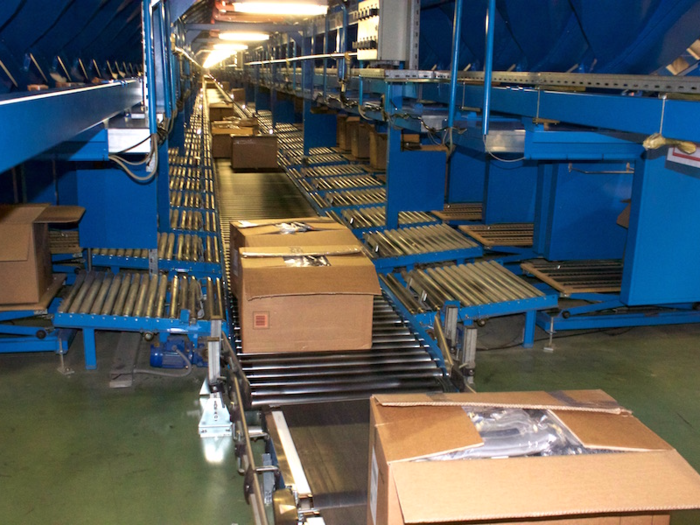
All European boxes are delivered by rail. The rest of the world is sent via plane.
We spotted a string of deliveries headed to European cities and towns including Avignon, France; Northampton, England; and Seville, Spain.
In a separate corner of the distribution center, hanging garments that have passed the separate quality-control process are also waiting to be shipped.
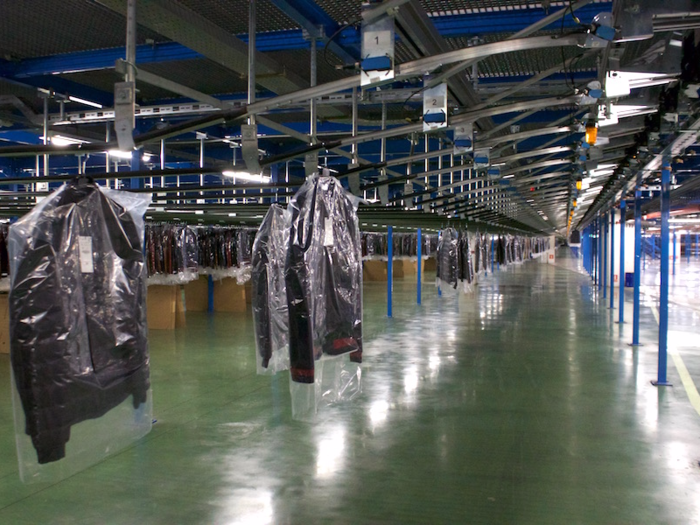
Within 36 hours, delivery boxes reach the furthest points of Europe. In 48 hours, they reach the rest of the world.
Popular Right Now
Advertisement